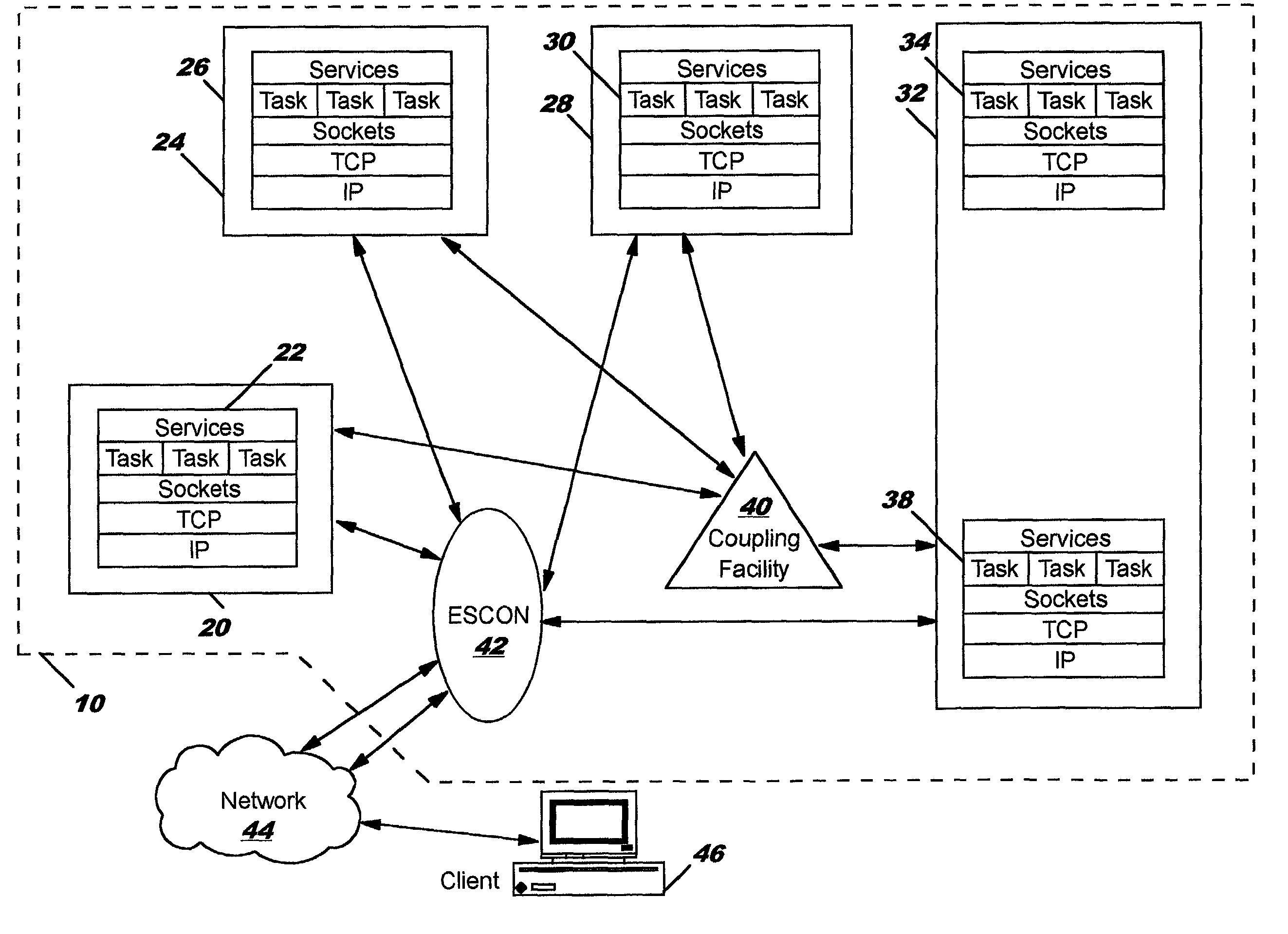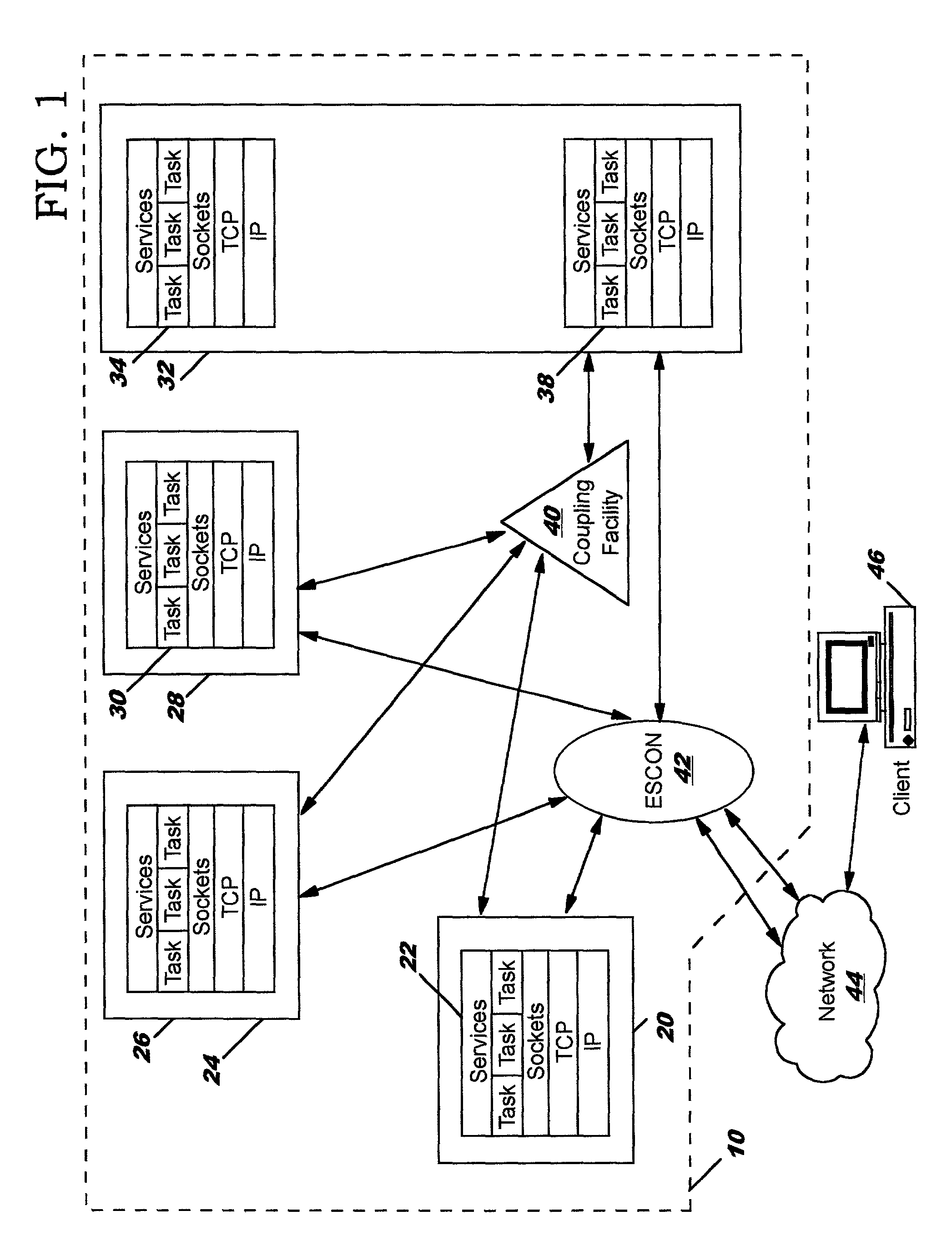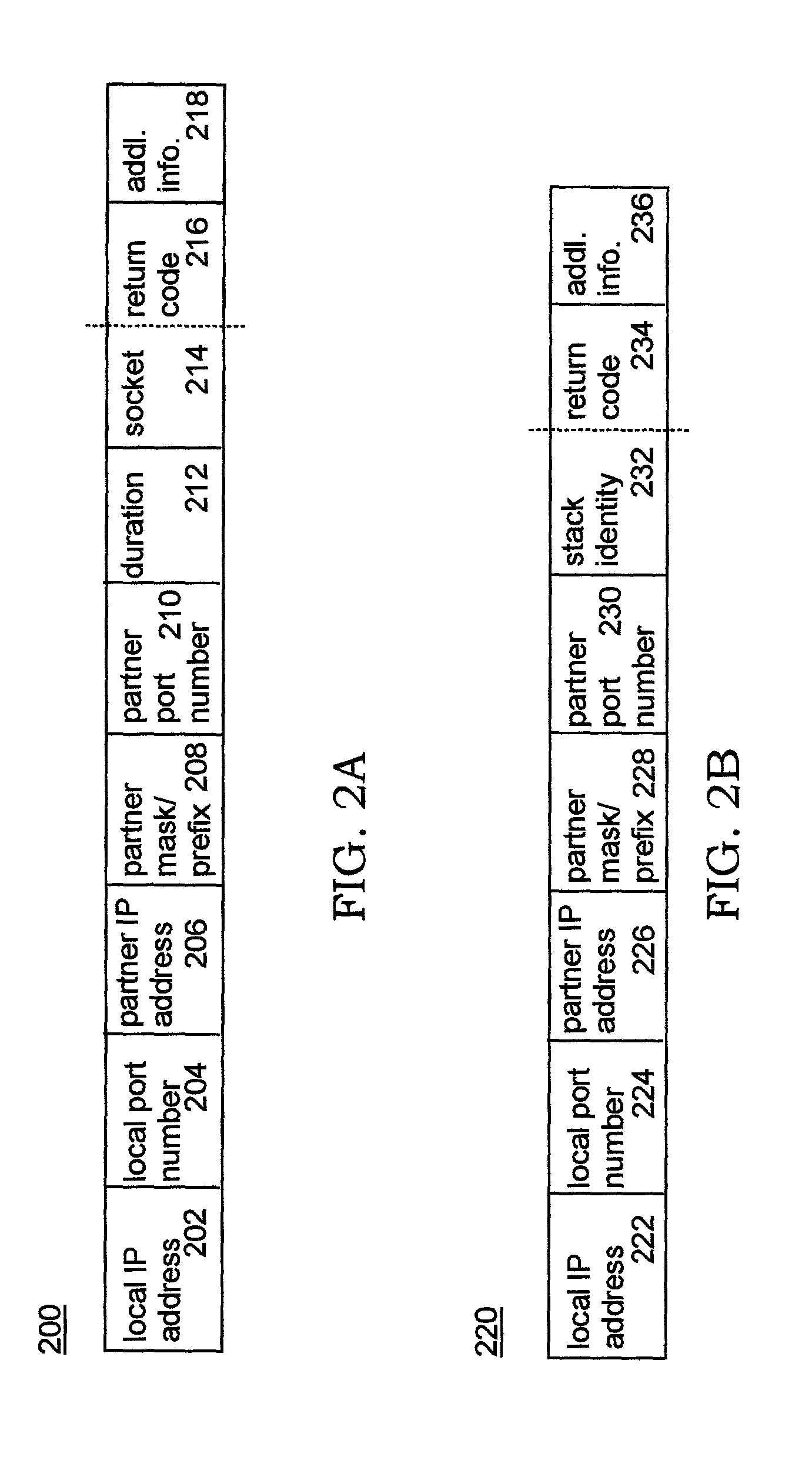Server application initiated affinity within networks performing workload balancing
a server application and workload technology, applied in the field of computer networks, can solve the problems of increasing network traffic, increasing packet size, and no longer relying on cookies as a means
- Summary
- Abstract
- Description
- Claims
- Application Information
AI Technical Summary
Benefits of technology
Problems solved by technology
Method used
Image
Examples
second preferred embodiment
[0112] FIG. 10 illustrates logic which may be used when a server application instance that will make use of automatic affinity processing for concurrent connection requests from particular clients initializes. This processing is preferably performed as each server application instance initializes, and may be selectively enabled or disabled through use of configuration parameters for that application. Block 1000 thus checks the configuration parameters which have been defined for the application, and Block 1005 tests whether these parameters specify special automatic affinity handling for parallel (i.e. concurrent) connections. If this test has a negative result, then the initialization continues as in the prior art (Block 1010); otherwise, Block 1015 preferably includes a parameter to activate automatic affinity processing on an existing configuration message that will be sent to the workload balancer or, alternatively, to the hosting stack, where this parameter serves to notify the...
PUM
 Login to View More
Login to View More Abstract
Description
Claims
Application Information
 Login to View More
Login to View More - R&D
- Intellectual Property
- Life Sciences
- Materials
- Tech Scout
- Unparalleled Data Quality
- Higher Quality Content
- 60% Fewer Hallucinations
Browse by: Latest US Patents, China's latest patents, Technical Efficacy Thesaurus, Application Domain, Technology Topic, Popular Technical Reports.
© 2025 PatSnap. All rights reserved.Legal|Privacy policy|Modern Slavery Act Transparency Statement|Sitemap|About US| Contact US: help@patsnap.com



